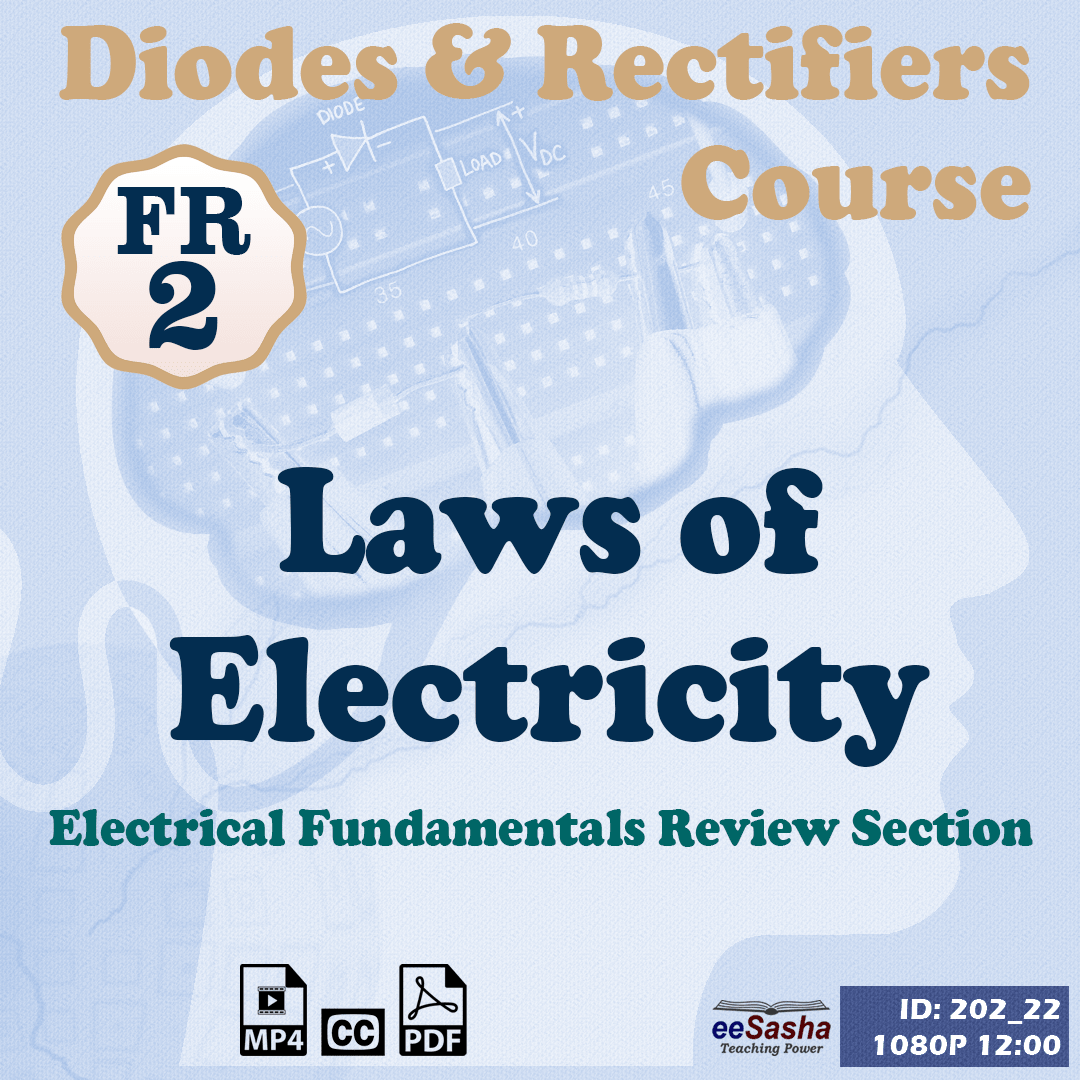Laws of Electricity
$7.99
Laws of Electricity Video Lesson
Description
Laws of Electricity Video Lesson
Video Lesson from Electricity Fundamentals Review Section of Diodes & Rectifiers Course
The review of fundamental electrical engineering laws and concepts:
- Electric nodes and Kirchhoff’s Current Law (KCL)
- Electric loops and Kirchhoff’s Voltage Law (KVL)
- Ohm’s Law (Resistors) and linear circuits
- Voltage polarities, current directions and signs
- Step-by-step approach to consistent equation writing for electrical laws and getting the signs right

Electronic Product Information
| Lesson Title: | Laws of Electricity |
| Part of a Section: | Electricity Fundamentals Review |
| Part of a Course: | Diodes & Rectifiers Course |
| Published: | September 2020 |
| Author: | Sasha Jakovljevic |
| Instructor: | Sasha Jakovljevic |
| Duration: | 12:00 min |
| Quality: | 1080P HD |
| Contents: | .mp4 Video file .srt Captions/Subtitle file .pdf Resource Slides |
Detailed Product Information
Laws of Electricity (12:00)
Fundamental laws of electricity are used throughout the course to solve circuits with diodes as well as to understand operation of rectifier devices. In this video lesson, we first define electric nodes and loops and then we review three most important laws of electrical circuits. Those are:
- Kirchhoff’s Current Law or KCL
- Kirchhoff’s Voltage Law or KVL and
- Ohm’s Law
For Kirchhoff’s Current Law (KCL), we answer:
- What is the definition of Kirchhoff’s Current Law?
- What is electrical node and why is it important for proper understanding of KCL?
- What are the boundaries of electrical nodes and their relationship to electric currents?
- How do we determine the direction of element currents with respect to electric node?
- What are the three ways we can write KCL equations and which way is the easiest one to understand?
- What does it mean to express currents “algebraically” and why do we want to do it?
- Why do we change the sign of a current and what implication does it have on KCL equations?
Next we cover Kirchhoff’s Voltage Law (KVL) and the following questions are addressed:
- How do we define Kirchhoff’s Voltage Law?
- What is the loop in an electrical circuit and how does it relate to KVL?
- How do we sum up voltages around the loop and why do we express them algebraically?
- What are the 5 critical steps in writing KVL equations?
- How do we remember the process of writing KVL equations so we always get the correct signs?
- What is the best way to designate voltage polarities of loop elements?
- What does it mean to “move around the loop” and what choices do we have?
- What is the rule for proper voltage sign writing?
- What happens with wires and how do we account for conductors in KVL equations?
Finally we have Ohm’s Law and here we answer:
- What relationship exists between voltage and current related to a linear circuit element?
- How does Ohm’s Law look like in a graphical representation?
- Why do we need to be very careful what voltage polarity and what direction of a current we have?
- What does it mean “matching” voltage and current for an element?
- How do we resolve Ohm’s Law equation if current and voltage do not match?
- What other formulas we can use that also represent Ohm’s Law?
We conclude with the final reminder about the language we use with respect to expressing voltages and currents of resistors. We need to be able to write electrical law equations correctly and consistently use proper signs so we avoid ending up with inaccurate results.
Only logged in customers who have purchased this product may leave a review.







Reviews
There are no reviews yet.